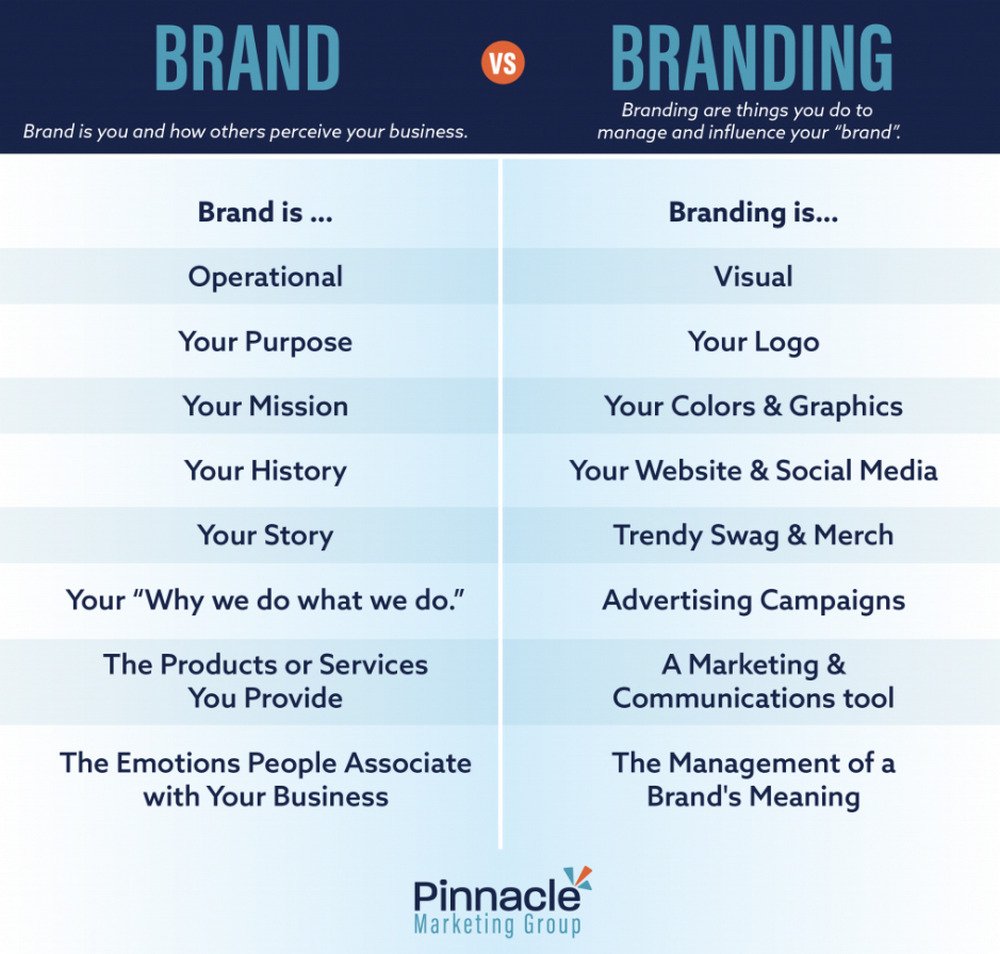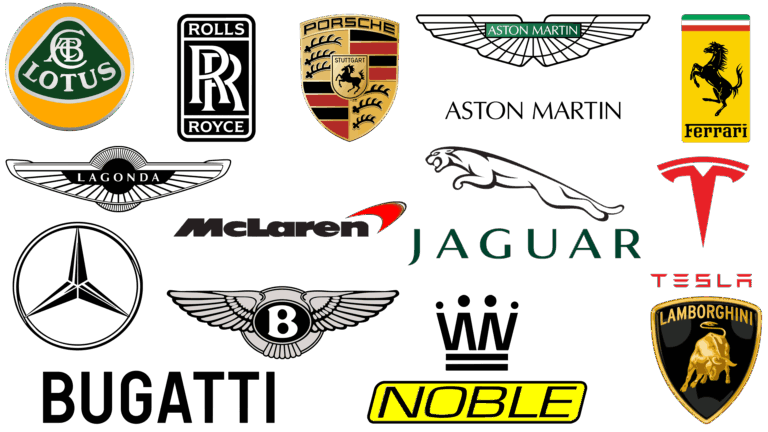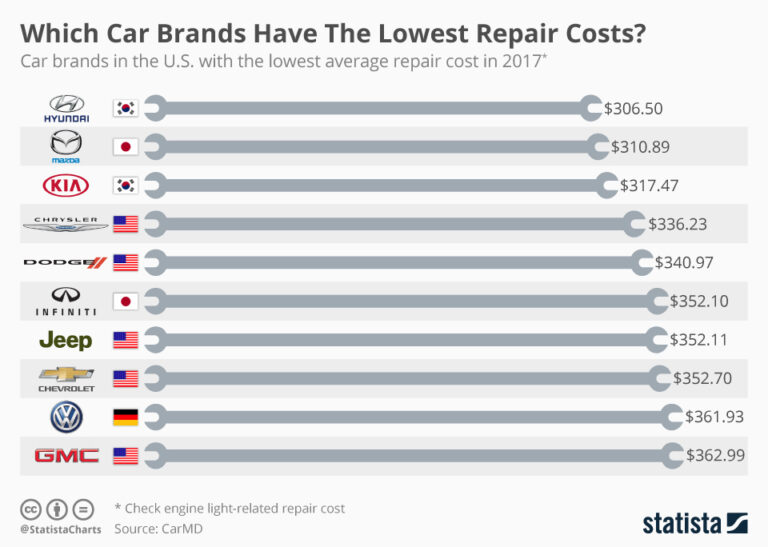Brand New Old Stock Cars: Unlocking the Secret World of Automotive Value
Brand New Old Stock Cars: Unlocking the Secret World of Automotive Value cars.truckstrend.com
In the fast-paced world of automotive innovation, where new models seem to emerge every few months, a curious and often overlooked segment of the market offers a unique proposition: Brand New Old Stock Cars. These vehicles are the automotive equivalent of a hidden treasure – brand new, never-registered, but from a previous model year. They sit on dealer lots, pristine and untouched, waiting for a savvy buyer to discover their exceptional value. For those in the know, a Brand New Old Stock Car isn’t just a car; it’s an opportunity to experience the joy of a new vehicle without paying the full price of the latest iteration, blending the best of both worlds.
This comprehensive guide will delve deep into the world of Brand New Old Stock Cars, exploring what they are, why they exist, their compelling benefits, and how you can find and purchase one to maximize your automotive investment.
Brand New Old Stock Cars: Unlocking the Secret World of Automotive Value
What Exactly Are Brand New Old Stock Cars?
At its core, a Brand New Old Stock Car (often abbreviated as BNOSC) is a vehicle that has never been titled or registered to a private owner. Despite being from a prior model year, it retains its "new" status in the eyes of the manufacturer and, crucially, for warranty purposes. Unlike a used car, a demonstrator vehicle, or a certified pre-owned (CPO) vehicle, a BNOSC has virtually no mileage beyond delivery and quality control checks.
Why do these automotive time capsules exist? Several factors contribute to their presence:
- Model Year Rollover: The most common reason. As new model years arrive, dealerships need to clear out the previous year’s inventory to make space.
- Slow Sellers: Certain color combinations, trim levels, or unpopular engine configurations might not sell as quickly as others.
- Discontinued Models: Sometimes, a manufacturer might discontinue a specific model line, leaving unsold units on lots.
- Over-Ordering: Dealers might over-estimate demand for a particular vehicle, leading to surplus inventory.
- Strategic Stocking: Occasionally, a dealership might intentionally hold onto certain models if they anticipate a future demand or a limited production run.

It’s vital to distinguish a Brand New Old Stock Car from other categories. It’s not a "used" car because it has no prior owners. It’s not a "demo" car, which would have accumulated significant mileage from test drives. It’s simply a new car that’s been waiting for its first owner for a little longer than usual.
The Allure and Benefits of Brand New Old Stock Cars
The primary appeal of Brand New Old Stock Cars lies in the substantial value they offer. For the right buyer, the advantages are compelling:

1. Significant Savings
This is arguably the biggest draw. Dealers are highly motivated to sell Brand New Old Stock Cars to make way for current-year models and avoid inventory holding costs. This urgency translates into aggressive discounts, often thousands of dollars below the original MSRP and significantly less than the equivalent current model year. You benefit from depreciation that has already occurred while the car sat on the lot, effectively getting a new car at a used car price point.
2. Full Factory Warranty
Unlike a used car, a Brand New Old Stock Car comes with the full manufacturer’s warranty, which typically begins on the date you purchase and register the vehicle. This provides the same peace of mind as buying the latest model, protecting you from unexpected repair costs during the initial ownership period.
3. Undriven, Unused Condition

You still get that coveted "new car smell" and the pristine condition that comes with a vehicle that hasn’t been driven by previous owners. The interior is untouched, the paintwork is factory fresh, and all components are brand new, offering the satisfying experience of being the very first owner.
4. Access to Discontinued Models or Features
For enthusiasts or those with specific preferences, Brand New Old Stock Cars can be a last chance to acquire a particular generation, engine option, or feature set that may have been discontinued in the current model year. This could be a specific manual transmission option, a beloved engine, or a unique body style.
5. Potentially Favorable Financing and Incentives
Manufacturers and dealerships often offer special incentives, low APR financing, or lease deals to clear out Brand New Old Stock Cars. While not always better than current-year offers, these can sometimes be exceptionally competitive, further enhancing the overall value proposition.
Navigating the BNOSC Market: A How-To Guide
Finding the perfect Brand New Old Stock Car requires a strategic approach. It’s less about walking into a showroom and picking from a vast selection, and more about a targeted search.
1. Research and Timing
- Identify Target Models: Focus on models that are either at the end of their production cycle, undergoing a significant redesign, or have just had a new model year released. These are the most likely candidates for BNOSC inventory.
- Timing Your Search: The best times to look are typically late in the calendar year (November/December) as dealers try to hit year-end sales targets, and early in the new year (January/February) after new models have arrived. End-of-quarter or end-of-month sales events can also be opportune.
2. Online Search Strategies
- Dealer Websites: Start by checking individual dealership websites. Use their "new inventory" filters but crucially look for previous model years (e.g., "New 2023 Honda Civic" when it’s 2024).
- Aggregator Sites: Websites like AutoTrader, Cars.com, and CarGurus allow you to filter new cars by model year. Be specific in your search to weed out used vehicles.
- Manufacturer Sites: Some manufacturer "inventory locator" tools might list BNOSC vehicles across their dealer network.
3. Direct Dealer Contact
Once you’ve identified potential vehicles online, don’t hesitate to call dealerships directly. Ask specifically for "new, previous model year" or "old stock" vehicles. Salespeople might not always advertise them prominently, but they’re often eager to move them. Be polite but firm in your inquiries.
4. Thorough Inspection
Even though it’s "new," a Brand New Old Stock Car has been sitting for a while. Before finalizing a purchase, conduct a thorough inspection:
- Tires: Check for flat spots from prolonged sitting. While often reversible with driving, severe cases might require replacement.
- Battery: Ensure the battery is fully charged and healthy. It might have degraded from sitting.
- Fluids: Check oil, coolant, and brake fluid levels and clarity.
- Cosmetics: Look for minor blemishes, dust accumulation, or light scratches from storage or moving around the lot.
- Build Date: Located on the door jamb, this will tell you exactly when the car was manufactured.
- Odometer Reading: Confirm it has only delivery miles (typically under 100 miles).
5. Negotiation Strategy
Understand that the dealer’s primary goal is to clear inventory. Your negotiation leverage is high.
- Focus on Out-the-Door Price: Always negotiate the total price, including all fees, taxes, and charges.
- Inquire About Incentives: Ask about any remaining manufacturer incentives and the dealer’s own discounts. Don’t assume they’ll offer everything upfront.
- Be Prepared to Walk Away: If the deal isn’t right, another BNOSC might pop up elsewhere.
Important Considerations and Potential Challenges
While the benefits of Brand New Old Stock Cars are significant, there are a few points to consider:
1. Accelerated Initial Depreciation
While you save substantially upfront, the car is technically already a model year or two old. Its depreciation curve will be steeper initially compared to a current-year model. However, since you bought it at a discount, this might not impact your overall financial outcome as much as it sounds.
2. Outdated Technology or Styling
A Brand New Old Stock Car will naturally lack the very latest features, styling updates, or infotainment systems introduced in the current model year. If having the absolute cutting-edge technology is paramount, a BNOSC might not be for you.
3. Limited Choice
You are limited to what’s available on dealer lots, not what you can custom-order from the factory. Specific color combinations, rare options, or desired trim levels might be scarce or non-existent. Flexibility is key.
4. Potential Minor Issues from Storage
As mentioned, prolonged storage can lead to minor issues like tire flat spots or a weakened battery. These are usually easily resolved, but warrant attention during your inspection.
Brand New Old Stock Cars: Illustrative Pricing Guide
Please note: The following table provides hypothetical examples for illustrative purposes only. Actual prices for Brand New Old Stock Cars vary wildly based on make, model, original MSRP, dealer motivation, geographic location, and current market demand. This table is designed to show the potential for significant savings.
| Model Year/Make/Model | Original MSRP (Approx.) | Typical BNOSC Price Range | Potential Savings | Key Features/Notes |
|---|
Brand New Old Stock Cars.
Brand New Old Stock Cars: A Deeper Look into Automotive Value
Introduction: Decoding the Appeal of Brand New Old Stock Cars
In the dynamic world of automotive retail, where shiny new models constantly vie for attention, there exists a unique and often overlooked segment that offers unparalleled value: Brand New Old Stock Cars. These aren’t pre-owned vehicles, demonstrator models, or certified used cars. Instead, Brand New Old Stock Cars are exactly what their name implies: vehicles that are brand new, have never been titled or registered to a private owner, but belong to a previous model year. They are the pristine, untouched remnants of a past production cycle, sitting in dealer inventory, waiting for the right discerning buyer.
The importance and relevance of Brand New Old Stock Cars stem from their compelling blend of benefits. They offer the untarnished experience of a new car – the factory warranty, the fresh interior, the zero-mileage odometer – combined with the significant financial advantage of a substantial discount. For many, these vehicles represent the ultimate smart buy, providing an opportunity to acquire a capable and reliable vehicle at a price point that makes premium features or higher trims more accessible. This guide will meticulously explore every facet of Brand New Old Stock Cars, from their origins to the intricate details of finding and purchasing one, ensuring you are well-equipped to navigate this exciting corner of the automotive market.
What Exactly Constitutes a Brand New Old Stock Car?
To truly understand the value proposition of Brand New Old Stock Cars, it’s crucial to grasp their precise definition and how they differ from other categories of vehicles available for sale. A Brand New Old Stock Car is a vehicle that:
- Has never been registered to a private individual or company. Its title is still held by the manufacturer or the dealership.
- Is from a previous model year. For instance, in 2024, a BNOSC would typically be a 2023 or even a 2022 model year vehicle.
- Has minimal mileage. The odometer reading should reflect only delivery miles (e.g., from the factory to the dealership, or between dealer lots), typically under 100-200 miles.
- Comes with a full factory warranty. This warranty begins the moment the car is first registered by its buyer, just like a current-year model.
The existence of Brand New Old Stock Cars is a natural consequence of the automotive sales cycle. Each year, manufacturers introduce new model years, often with styling refreshes, updated technology, or entirely new designs. Dealerships, in turn, must clear out their existing inventory to make space for the incoming models. Factors contributing to BNOSC inventory include:
- Model Year Transitions: The most common reason. As new models arrive, dealers aggressively price older stock.
- Slow-Selling Configurations: Certain color-trim combinations, engine options, or less popular packages might not sell as quickly.
- Discontinued Models/Trims: When a manufacturer stops producing a specific model or a particular trim level, any remaining units become BNOSC.
- Dealer Over-Ordering: Sometimes, dealerships might order more vehicles than they can sell within a typical cycle, leading to a surplus.
It’s vital to differentiate Brand New Old Stock Cars from used cars, certified pre-owned (CPO) vehicles, or even demonstrator models. A used car has been previously titled. A CPO car is a used car that has undergone a rigorous inspection and often comes with an extended manufacturer warranty. A demonstrator car (demo) is a vehicle used by dealership staff or for extended test drives, accumulating significant mileage (often thousands of miles) and typically having been registered to the dealership. BNOSC vehicles are truly new, offering a unique opportunity to own a "fresh" vehicle at a significant discount.
The Undeniable Benefits of Opting for a Brand New Old Stock Car
The appeal of Brand New Old Stock Cars is multifaceted, offering a compelling array of advantages for the discerning buyer.
1. Exceptional Value and Significant Savings
This is the cornerstone of the BNOSC appeal. Dealerships are highly motivated to sell Brand New Old Stock Cars to free up capital, avoid ongoing inventory costs, and make room for the latest models. This urgency translates into substantial discounts, often thousands of dollars below the original Manufacturer’s Suggested Retail Price (MSRP). You effectively get a new car at a price point that has already absorbed a significant portion of its initial depreciation, making it an incredibly cost-effective purchase.
2. Full Manufacturer’s Warranty and Peace of Mind
One of the most attractive benefits is that Brand New Old Stock Cars come with the full, unactivated factory warranty. Unlike a used car where the warranty period might be partially expired, the warranty on a BNOSC begins on the day you purchase and register it. This provides the same comprehensive coverage and peace of mind as buying the latest model year, protecting you from unexpected mechanical issues for the initial years of ownership.
3. Pristine, Undriven Condition
The joy of being the first owner of a vehicle is a unique experience. With a Brand New Old Stock Car, you get that "new car smell," the pristine interior, and a vehicle that has never been subjected to the habits or wear-and-tear of a previous owner. The odometer will show only delivery miles, assuring you that you’re getting a truly untouched vehicle straight from the factory.
4. Access to Specific Configurations or Discontinued Features
For enthusiasts or those with very specific needs, Brand New Old Stock Cars can be a golden opportunity. You might find a vehicle with a particular engine (e.g., a V8 before a V6 was introduced), a specific transmission (like a manual gearbox), a unique color, or a beloved trim level that is no longer offered in the current model year. This allows you to acquire a car that perfectly fits your preferences, even if it’s no longer in production.
5. Potentially Favorable Financing and Incentives
To move Brand New Old Stock Cars, manufacturers and dealerships often roll out special financing rates, cash back offers, or lease incentives. While these might not always surpass current model year deals, they can sometimes be exceptionally attractive, further sweetening the deal and making the overall cost of ownership even lower.
Navigating the Brand New Old Stock Car Market: A Strategic Buying Guide
Finding and purchasing a Brand New Old Stock Car requires a targeted and informed approach. It’s not as straightforward as simply browsing the newest models, but the rewards are well worth the effort.
1. Strategic Research and Timing
- Identify Likely Candidates: Begin by researching models that have recently undergone a significant redesign, have had a new generation introduced, or are nearing the end of their current model cycle. These vehicles are most likely to become BNOSC.
- Best Time to Buy: The ideal periods to search are typically:
- Year-End (November/December): Dealerships push to meet annual sales quotas and clear out inventory before the new calendar year.
- Early New Year (January/February): After the new model year vehicles have arrived, dealers are eager to offload the remaining older stock.
- End of Quarter/Month: Dealerships often have internal sales targets that drive aggressive pricing at these times.
2. Utilizing Online Search Tools
- Dealership Websites: When browsing new inventory on individual dealer sites, specifically look for vehicles listed with the previous model year (e.g., "New 2023 [Make Model]" in 2024).
- Third-Party Aggregators: Websites like AutoTrader, Cars.com, and CarGurus are invaluable. Use their "new car" filters, but crucially, select the previous model year from the dropdown menus. You might also find luck searching for terms like "new old stock," "leftover," or "previous year model."
- Manufacturer Inventory Locators: Some automaker websites have tools that allow you to search for new inventory across their entire dealer network, which can help uncover BNOSC hidden across states.
3. Direct Engagement with Dealerships
Once you have identified a potential Brand New Old Stock Car, don’t hesitate to contact the dealership directly.
- Be Specific: When speaking with sales staff, clearly state that you are looking for a "new, previous model year" or "old stock" vehicle. This helps them understand your intent and direct you to the correct inventory.
- Inquire About All Incentives: Ask about both manufacturer-to-consumer incentives (like cash back or special APRs) and any additional dealer-specific discounts or rebates on BNOSC units.
4. Thorough Pre-Purchase Inspection
Even though the car is new, it’s crucial to perform a diligent inspection before committing:
- Odometer Reading: Confirm it has only delivery mileage.
- Build Date: Check the sticker on the driver’s side door jamb. This indicates when the vehicle rolled off the assembly line, giving you an idea of how long it has been sitting.
- Tires: Inspect for any signs of flat spots (slight indentations in the rubber from prolonged sitting) or unusual wear. While often temporary, severe cases might indicate a need for replacement sooner.
- Battery: Ask the dealer to test the battery’s health. Batteries can degrade when vehicles sit for extended periods without being driven or trickle-charged.
- Fluids: A quick check of oil, coolant, and brake fluid levels is advisable.
- Cosmetics: Look for any minor scratches, dings, or blemishes that might have occurred during storage or movement on the lot.
- Functionality: Test all electronics, lights, air conditioning, and infotainment features to ensure everything is in perfect working order.
5. Mastering the Negotiation
Your leverage is strong when buying a Brand New Old Stock Car.
- Focus on the Out-the-Door Price: Always negotiate the total price you will pay, including all fees, taxes, and destination charges.
- Be Prepared to Walk: If the dealer isn’t offering a compelling discount, be ready to move on. Another dealership might have the same model, or a similar





